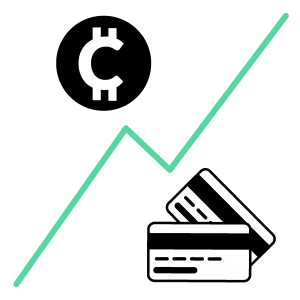
Does blockchain optimise online payments? Blockchain technology has taken the world by storm since its invention in 2008. The finance world has been the biggest industry to benefit. The entire cryptocurrency market cap is at a stunning all-time high of nearly $2.95 Trillion. By now, the popular Bitcoin cryptocurrency is accepted by big names including Microsoft, AT&T and, oddly enough, even the Miami Dolphins.
The tech is taking over because it encodes data within a digital ledger that logs every transaction and can not be faked or modified. When used as a currency, blockchain and decentralised ledger technology (DLT) stops counterfeiting without the need for central administrators like financial institutions.
But is the technology improving traditional payment methods or is it on its way to replacing them entirely? And what drawbacks could we see from a world of cryptocurrency payments?
The big benefit of blockchain tech is cutting out the middleman. Banks were traditionally needed to administer and verify transactions. With blockchain, they are unnecessary to complete a transaction. Blockchain-powered payments could be both faster and come with lower fees than payments including banks. And cutting out banks is a pretty big disruption for the world of payments.
Cutting out the middleman from the payment process offers faster and cheaper transaction methods. However, banks offer additional layer of security. They are usually regulated and supervised by multiple set of rules and associations. While Blockchain also offers security of payments, integrity of payments is another thing. Without the middleman blockchain payments can be prone to illegal activities also. Banks for traditional payment methods protects the international online payment environment from criminal activities, while protecting interests of merchants and customers.
The industry is taking this game-changer seriously: 90% of the European Payments Council members believed that blockchain tech would “fundamentally change the industry by 2025”, according to a CBInsights report, and they weren't wrong. Before crypto, banks did not have any incentive to lower their transaction fees, which set the industry up for disruption. Cross-border transactions accounted for $224 billion in payments revenues in 2019 alone, so there was a lot on the line.
So, Bitcoin is fast, cheap and effective. But is it better than the payment methods we already use?

Bitcoin payments come with one core disadvantage for users. Unlike credit card payments, cryptocurrency transactions can not be cancelled or refunded. This puts customers at a greater risk of losing their money due to fraudulent transactions or theft, and the impact can be big. One scammer even claims to have stolen $1 million over 14 months through phishing attacks.
In addition, the tertiary benefits of credit or debit cards — reward programs. The ability to borrow money and widespread integration with other services will be lost to Bitcoin devotees. On the other hand, so would the problems that come with cards. Like late fees, negative credit score impacts or extra charges for international payments.
One final downside to the technology is its environmental impact: Bitcoin’s total annualised carbon footprint back in 2022 was 68.98 Mt CO2, which was around the equivalent of the country of Israel’s carbon output. That power consumption will continue to grow as the value of Bitcoin rises due to greater adaptation.
In 2015, a single Bitcoin transaction used power equal to 1.5 days of the average American household’s electricity usage. That’s already a lot, but today, the same transaction has ballooned to the power consumption of an average U.S. household over 38 days. Given this power usage to transaction ratio, Bitcoin would simply be unsustainable as the core of our whole financial system.
Bitcoin transactions are gaining popularity, and offer a fast, inexpensive alternative to card payments.
Even if it will never take over the entire financial system, the technology is rapidly becoming a meaningful component of it. Towards the end of 2024, the market cap reached a massive $3.4 trillion, 88% growth YOY.
Their potential for disrupting payments is exactly why banks and retailers are increasingly interested in owning stock in crypto startups or learning how to accept them as payment. By getting in early, banks can hedge their bets and get a piece of a growing industry. Small business owners can also accept Bitcoin with the right service — some startups are helping retailers by offering cryptocurrency transaction method integrations for e-commerce platforms including Shopify and WooCommerce.
While blockchain optimise online payments for certain factors including speed and ease of use, they come with some downsides for consumers. Such as the inability to get refunds, as well as a downside for the financial infrastructure in the form of unsustainable power usage. Blockchain won’t be going away any time soon, but it won’t be turning the financial system completely on its ear, either.